#whalley abbey
Photo
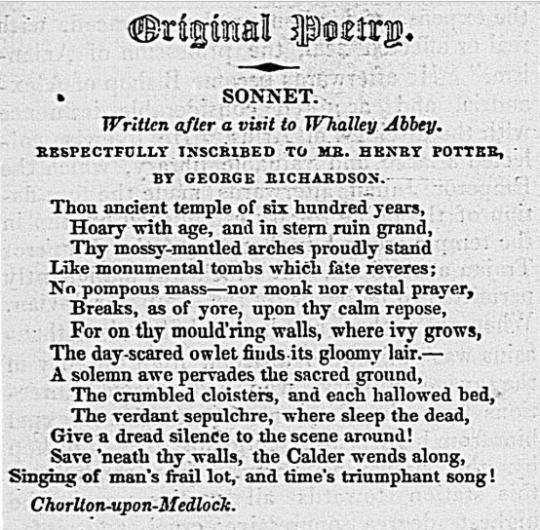
Today’s poem: a sonnet occasioned by a visit to Whalley Abbey.
#sonnet#poetry#george richardson#henry potter#ruin#dissolution of the monasteries#henry VIII#whalley abbey#lancashire#river calder
2 notes
·
View notes
Text
On this date in musical history…
September 26th
2021 - Alan Lancaster
English musician Alan Lancaster died age 72 due to complications from multiple sclerosis. He is best known as a founding member and bassist of Status Quo, playing with the band from 1967 to 1985.
2016 - YouTube-mp3.org
Universal, Warner Brothers, Sony and several other record labels filed a law suit against the operators of YouTube-mp3.org, a service that allowed its users to remove audio from videos streamed on YouTube. The court action, launched against a German company, alleged that "tens, or even hundreds, of millions of tracks are illegally copied and distributed by stream ripping services each month."
1995 - AC/DC
AC/DC released Ballbreaker their 12th international studio album. The album which was produced by Rick Rubin, featured the return of former drummer Phil Rudd, who had been fired from the band in 1983 as a result of drinking and drug problems and a fight with founding rhythm guitarist Malcolm Young.
1989 - Paul McCartney
Paul McCartney started his world tour at The Drammenshallen, in Drammen, Norway. It was McCartney's first major tour outing in ten years, since Wings UK Tour 1979, and his first appearances in North America in thirteen years.
1981 - Bruce Dickinson
Bruce Dickinson joined UK rock band Iron Maiden, (Dickinson had been the vocalist with Samson).
1979 - U2
U2 released their very first record, an EP titled 'U2-3.' With an initial run of 1,000 individually numbered copies the tracks were produced by the band with Chas de Whalley and was available only in Ireland.
1969 - The Beatles
The Beatles released Abbey Road in the UK. The final studio recordings from the group featured two George Harrison songs ’Something’ (Harrison's first A-side single), and 'Here Comes The Sun'. In their interviews for The Beatles Anthology, the surviving band members stated that, although none of them ever made the distinction of calling it the "last album", they all felt at the time this would very likely be the final Beatles product and therefore agreed to set aside their differences and "go out on a high note".
1968 - Brian Jones
Rolling Stone Brian Jones was fined £50 with 100 guineas cost after being found guilty of possession of cannabis.
1967 - Pink Floyd
Pink Floyd played the first of three nights at the Fillmore in San Francisco, the groups first ever live dates in the US.
1965 - The Who
At the end of a European tour Roger Daltry knocked out Keith Moon resulting in the singer being sacked from The Who. The band were playing two shows in one night in Denmark, when an argument broke about between all four band members. Daltrey was reinstated the following day.
1964 - Roy Orbison
Roy Orbison started a three week run at No.1 on the US singles chart with 'Oh Pretty Woman'. The title was inspired by Orbison's wife Claudette interrupting a conversation to announce she was going out; when Orbison asked if she was okay for cash, his co-writer Bill Dees interjected "A pretty woman never needs any money."
1961 - Bob Dylan
The Greenbriar Boys started a two-week residency at Gerde's Folk Club in New York. The opening act was Bob Dylan.
1937 - Bessie Smith
American blues singer Bessie Smith died aged 43 after being involved in a car accident while traveling along Route 61 outside Memphis, Tennessee. Her 1923 song ‘Downhearted Blues’ was inducted into the Grammy Hall of Fame in 2006.
1 note
·
View note
Text
Easy Recipe: Quick Wild Garlic Hummus
Over the weekend I visited Whalley Abbey for a walk. The grounds were covered in spring flowers and the trees were starting to blossom. Amongst the daffodil and crocus were some newly sprouted wild garlic, and once we came across an especially abundant patch, I decided to pick a few handfuls to make something nice with once I’d got home. The something nice turned out to be a batch of wild garlic…

View On WordPress
0 notes
Photo
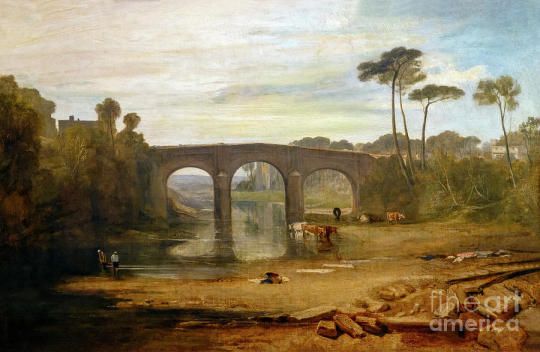
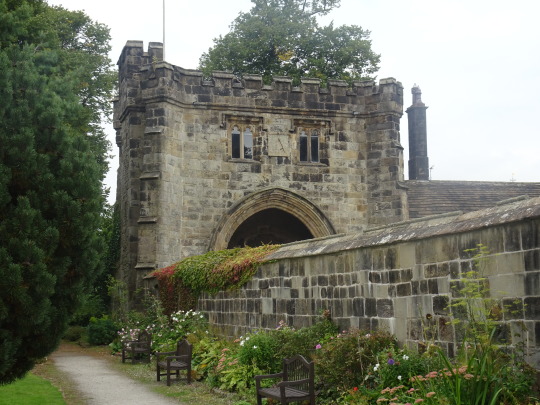
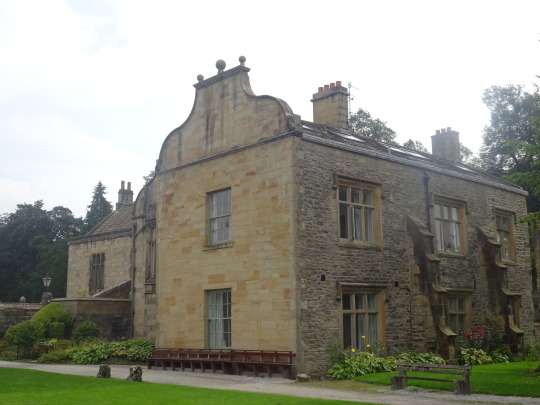
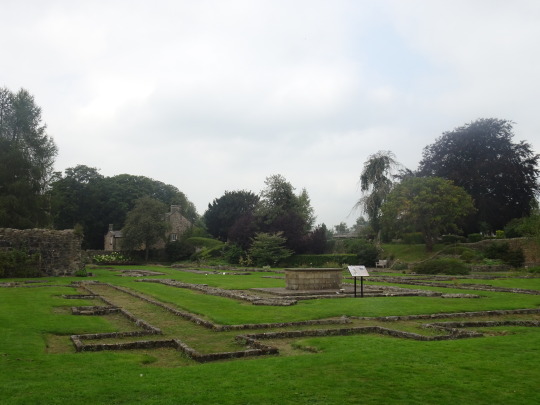
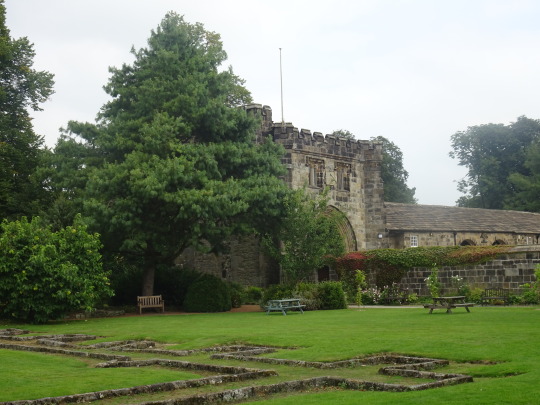
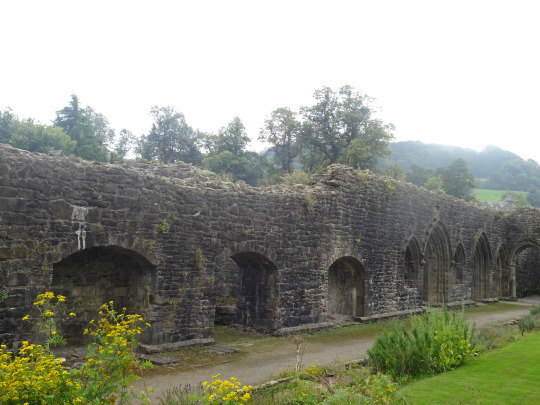

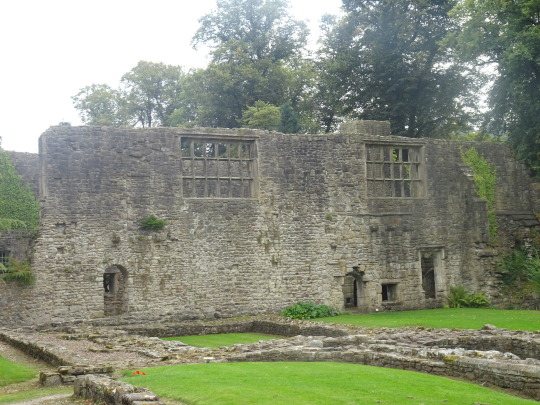

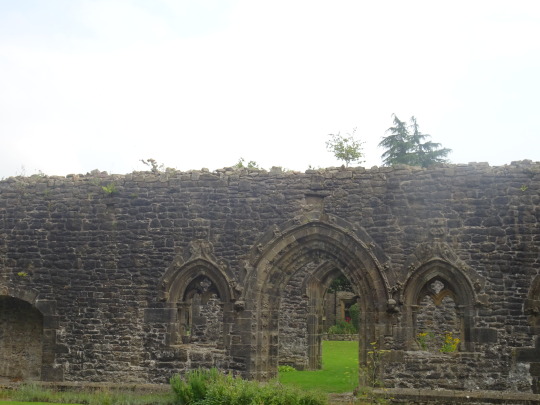
“When all England is aloft
Where so safe as in Christ’s croft?
Where do you suppose Christ’s croft to be,
But between Ribble and Mersey?” Anon, quoted by J.A. Hilton.
Whalley Abbey was built between 1283 and 1296 by Cistercian monks from the failed Stanlow Abbey, sponsored by Norman baron Henry de Lacy. They had a solid if uneventful life, serving God and man well in a pious, rural and conservative county.
This was all to change in 1536, when Henry VIII took an axe to this and other institutions as part of a landgrab and to fuel his wars, dressed up in the language of the new Protestant religion.
Throughout Lancashire and other rural areas a movement called the Pilgrimage of Grace arose to defend the old religion; while it’s questionable how big a threat this was to Henry and how important Whalley was to the rebellion, the monks and Abbot John Paslew were blamed by the Heinricians, who defeated the rebels, executed Paslew and shut down Whalley in 1537. It was sold by the crown to Richard Assheton.
Lancashire, as Hilton has painstakingly chronicled, was one of the areas where Catholicism was strongest in the centuries after the Reformation, not (as is popularly believed) as a dying faith clinging on but in its dotage, but a strengthened popular faith fed by the Counter-Reformation in Europe and its links to Ireland (I will be sharing much more about this later).
Despite the relative strength of the old faith, even here it was only followed by a minority; the diehard recusants who defied church and state for their faith, and the ‘church papists’ who were outwardly Anglicans but believed in the old faith in their hearts; while obviously no friends to the new Puritan movement, these were also not going to fight for Catholicism in any meaningful way.
So it was that William Blundell, from nearby Crosby, one of many Catholic gentry still living in Lancashire, rued:
“The time hath been we had one faith
And strode aright one ancient path,
The time is now that each man may
See new religions coined each day”.
What fragile peace there may have been in Lancashire between 1536 and 1642 was shattered when the British Civil Wars broke out in 1642; for obvious reasons, Catholics were overwhelmingly loyal to King Charles I, fearing and hating the Puritans whom they found on the other side; even though they were mistrusted by royalist leaders who saw them as a liability.
Like the beleaguered Christians in Syria today the Catholic cavaliers (including William Blundell, son of William Blundell) stuck with a leader for whom they had no love rather than a rebel movement which openly hated them.
The cause which Catholics overhwelmingly supported ended up losing, of course, and Charles was deposed and executed in 1649, replaced by a ‘protectorate’ led by Oliver Cromwell (1649-58) and after his death his son Richard (1658-60), before Charles II, son of Charles I, ousted Richard (who ended up living until 1712, though as a powerless individual) and became king in 1660.
None of this furthered Whalley’s cause. It was used as a private home by Ralph Assheton, the member of Parliament for Clitheroe (a fine town which I’ll blog about later) who knocked down the monastery largely out of spite (he was a staunch Protestant who had opposed Charles I in the civil wars, though he was not punished by Charles II, to whom he was no serious threat).
Ralph Assheton, a descendent of that Richard who had bought the site in 1537, built the house, which still stands, but deliberately did little with the monastery; it can be seen (1) as it was in 1811 when JMW Turner came here and painted it. Throughout this time, little of note happened at Whalley, which was largely as it was at Ralph Assheton’s death in 1680, but decayed.
In 1923, it was bought by the Church of England, who sponsored an excavation which has made Whalley what it now is, a picturesque ruin (in the Forest of Bowland AONB, which as you’ll see I thoroughly explored). with a still standing and still useful 17th-century house, which was done up in 2005 and is now used by the church as a conference centre.
So although we’re living in a world that John Paslew would have found baffling and reprehensible, I hope some of the monks would have appreciated that God and man are still being served here.
34 notes
·
View notes
Text
Pendle witches
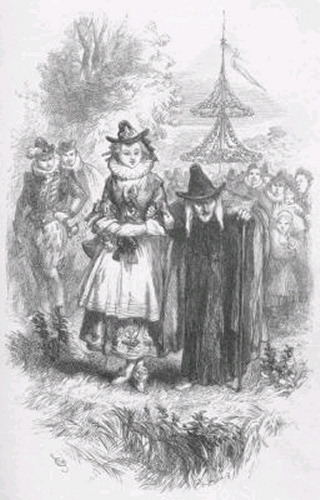
The trials of the Pendle witches in 1612 are among the most famous witch trials in English history, and some of the best recorded of the 17th century. The twelve accused lived in the area surrounding Pendle Hill in Lancashire, and were charged with the murders of ten people by the use of witchcraft. All but two were tried at Lancaster Assizes on 18–19 August 1612, along with the Samlesbury witches and others, in a series of trials that have become known as the Lancashire witch trials. One was tried at York Assizes on 27 July 1612, and another died in prison. Of the eleven who went to trial – nine women and two men – ten were found guilty and executed by hanging; one was found not guilty.
The official publication of the proceedings by the clerk to the court, Thomas Potts, in his The Wonderfull Discoverie of Witches in the Countie of Lancaster, and the number of witches hanged together – nine at Lancaster and one at York – make the trials unusual for England at that time. It has been estimated that all the English witch trials between the early 15th and early 18th centuries resulted in fewer than 500 executions; this series of trials accounts for more than two per cent of that total.
Six of the Pendle witches came from one of two families, each at the time headed by a woman in her eighties: Elizabeth Southerns (a.k.a. Demdike[a]), her daughter Elizabeth Device, and her grandchildren James and Alizon Device; Anne Whittle (a.k.a. Chattox), and her daughter Anne Redferne. The others accused were Jane Bulcock and her son John Bulcock, Alice Nutter, Katherine Hewitt, Alice Grey, and Jennet Preston. The outbreaks of witchcraft in and around Pendle may demonstrate the extent to which people could make a living by posing as witches. Many of the allegations resulted from accusations that members of the Demdike and Chattox families made against each other, perhaps because they were in competition, both trying to make a living from healing, begging, and extortion.

Religious and political background
The accused witches lived in the area around Pendle Hill in Lancashire, a county which, at the end of the 16th century, was regarded by the authorities as a wild and lawless region: an area "fabled for its theft, violence and sexual laxity, where the church was honoured without much understanding of its doctrines by the common people". The nearby Cistercian abbey at Whalley had been dissolved by Henry VIII in 1537, a move strongly resisted by the local people, over whose lives the abbey had until then exerted a powerful influence. Despite the abbey's closure, and the execution of its abbot, the people of Pendle remained largely faithful to their Roman Catholic beliefs and were quick to revert to Catholicism on Queen Mary's accession to the throne in 1553.
When Mary's Protestant half-sister Elizabeth came to the throne in 1558 Catholic priests once again had to go into hiding, but in remote areas such as Pendle they continued to celebrate Mass in secret.[3] In 1562, early in her reign, Elizabeth passed a law in the form of An Act Against Conjurations, Enchantments and Witchcrafts (5 Eliz. I c. 16). This demanded the death penalty, but only where harm had been caused; lesser offences were punishable by a term of imprisonment. The Act provided that anyone who should "use, practise, or exercise any Witchcraft, Enchantment, Charm, or Sorcery, whereby any person shall happen to be killed or destroyed", was guilty of a felony without benefit of clergy, and was to be put to death.
On Elizabeth's death in 1603 she was succeeded by James I. Strongly influenced by Scotland's separation from the Catholic Church during the Scottish Reformation, James was intensely interested in Protestant theology, focusing much of his curiosity on the theology of witchcraft. By the early 1590s he had become convinced that he was being plotted against by Scottish witches.After a visit to Denmark, he had attended the trial in 1590 of the North Berwick witches, who were convicted of using witchcraft to send a storm against the ship that carried James and his wife Anne back to Scotland. In 1597 he wrote a book, Daemonologie, instructing his followers that they must denounce and prosecute any supporters or practitioners of witchcraft. One year after James acceded to the English throne, a law was enacted imposing the death penalty in cases where it was proven that harm had been caused through the use of magic, or corpses had been exhumed for magical purposes James was, however, sceptical of the evidence presented in witch trials, even to the extent of personally exposing discrepancies in the testimonies presented against some accused witches
In early 1612, the year of the trials, every justice of the peace (JP) in Lancashire was ordered to compile a list of recusants in their area, i.e. those who refused to attend the English Church and to take communion, a criminal offence at that time. Roger Nowell of Read Hall, on the edge of Pendle Forest, was the JP for Pendle. It was against this background of seeking out religious nonconformists that, in March 1612, Nowell investigated a complaint made to him by the family of John Law, a pedlar, who claimed to have been injured by witchcraft.[9] Many of those who subsequently became implicated as the investigation progressed did indeed consider themselves to be witches, in the sense of being village healers who practised magic, probably in return for payment, but such men and women were common in 16th-century rural England, an accepted part of village life.
It was perhaps difficult for the judges charged with hearing the trials – Sir James Altham and Sir Edward Bromley – to understand King James's attitude towards witchcraft. The king was head of the judiciary, and Bromley was hoping for promotion to a circuit nearer London. Altham was nearing the end of his judicial career, but he had recently been accused of a miscarriage of justice at the York Assizes, which had resulted in a woman being sentenced to death by hanging for witchcraft. The judges may have been uncertain whether the best way to gain the King's favour was by encouraging convictions, or by "sceptically testing the witnesses to destruction"
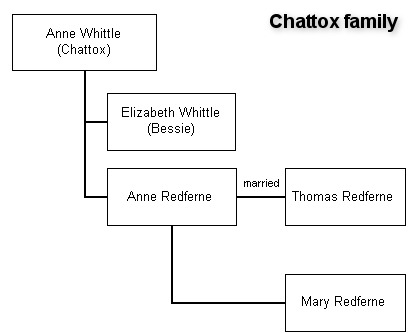
Events leading up to the trials
One of the accused, Demdike, had been regarded in the area as a witch for fifty years, and some of the deaths the witches were accused of had happened many years before Roger Nowell started to take an interest in 1612.The event that seems to have triggered Nowell's investigation, culminating in the Pendle witch trials, occurred on 21 March 1612.
On her way to Trawden Forest, Demdike's granddaughter, Alizon Device, encountered John Law, a pedlar from Halifax, and asked him for some pins. Seventeenth-century metal pins were handmade and relatively expensive, but they were frequently needed for magical purposes, such as in healing – particularly for treating warts – divination, and for love magic, which may have been why Alizon was so keen to get hold of them and why Law was so reluctant to sell them to her. Whether she meant to buy them, as she claimed, and Law refused to undo his pack for such a small transaction, or whether she had no money and was begging for them, as Law's son Abraham claimed, is unclear. A few minutes after their encounter Alizon saw Law stumble and fall, perhaps because he suffered a stroke; he managed to regain his feet and reach a nearby inn. Initially Law made no accusations against Alizon,[19] but she appears to have been convinced of her own powers; when Abraham Law took her to visit his father a few days after the incident, she reportedly confessed, and asked for his forgiveness
Alizon Device, her mother Elizabeth, and her brother James were summoned to appear before Nowell on 30 March 1612. Alizon confessed that she had sold her soul to the Devil, and that she had told him to lame John Law after he had called her a thief. Her brother, James, stated that his sister had also confessed to bewitching a local child. Elizabeth was more reticent, admitting only that her mother, Demdike, had a mark on her body, something that many, including Nowell, would have regarded as having been left by the Devil after he had sucked her blood.When questioned about Anne Whittle (Chattox), the matriarch of the other family reputedly involved in witchcraft in and around Pendle, Alizon perhaps saw an opportunity for revenge. There may have been bad blood between the two families, possibly dating from 1601, when a member of Chattox's family broke into Malkin Tower, the home of the Devices, and stole goods worth about £1,equivalent to about £117 as of 2018. Alizon accused Chattox of murdering four men by witchcraft, and of killing her father, John Device, who had died in 1601. She claimed that her father had been so frightened of Old Chattox that he had agreed to give her 8 pounds (3.6 kg) of oatmeal each year in return for her promise not to hurt his family. The meal was handed over annually until the year before John's death; on his deathbed John claimed that his sickness had been caused by Chattox because they had not paid for protection.
On 2 April 1612, Demdike, Chattox, and Chattox's daughter Anne Redferne, were summoned to appear before Nowell. Both Demdike and Chattox were by then blind and in their eighties, and both provided Nowell with damaging confessions. Demdike claimed that she had given her soul to the Devil 20 years previously, and Chattox that she had given her soul to "a Thing like a Christian man", on his promise that "she would not lack anything and would get any revenge she desired".Although Anne Redferne made no confession, Demdike said that she had seen her making clay figures. Margaret Crooke, another witness seen by Nowell that day, claimed that her brother had fallen sick and died after having had a disagreement with Redferne, and that he had frequently blamed her for his illness.Based on the evidence and confessions he had obtained, Nowell committed Demdike, Chattox, Anne Redferne and Alizon Device to Lancaster Gaol, to be tried for maleficium – causing harm by witchcraft – at the next assizes
Meeting at Malkin Tower
The committal and subsequent trial of the four women might have been the end of the matter, had it not been for a meeting organised by Elizabeth Device at Malkin Tower, the home of the Demdikes held on Good Friday 10 April 1612. To feed the party, James Device stole a neighbour's sheep.
Friends and others sympathetic to the family attended, and when word of it reached Roger Nowell, he decided to investigate. On 27 April 1612, an inquiry was held before Nowell and another magistrate, Nicholas Bannister, to determine the purpose of the meeting at Malkin Tower, who had attended, and what had happened there. As a result of the inquiry, eight more people were accused of witchcraft and committed for trial: Elizabeth Device, James Device, Alice Nutter, Katherine Hewitt, John Bulcock, Jane Bulcock, Alice Grey and Jennet Preston. Preston lived across the border in Yorkshire, so she was sent for trial at York Assizes; the others were sent to Lancaster Gaol, to join the four already imprisoned there.
Malkin Tower is believed to have been near the village of Newchurch in Pendle,or possibly in Blacko on the site of present-day Malkin Tower Farm and to have been demolished soon after the trials.
Trials
The Pendle witches were tried in a group that also included the Samlesbury witches, Jane Southworth, Jennet Brierley, and Ellen Brierley, the charges against whom included child murder, cannibalism; Margaret Pearson, the so-called Padiham witch, who was facing her third trial for witchcraft, this time for killing a horse; and Isobel Robey from Windle, accused of using witchcraft to cause sickness
Some of the accused Pendle witches, such as Alizon Device, seem to have genuinely believed in their guilt, but others protested their innocence to the end. Jennet Preston was the first to be tried, at York Assizes.
York Assizes, 27 July 1612
Jennet Preston lived in Gisburn, which was then in Yorkshire, so she was sent to York Assizes for trial. Her judges were Sir James Altham and Sir Edward Bromley. Jennet was charged with the murder by witchcraft of a local landowner, Thomas Lister of Westby Hall, to which she pleaded not guilty. She had already appeared before Bromley in 1611, accused of murdering a child by witchcraft, but had been found not guilty. The most damning evidence given against her was that when she had been taken to see Lister's body, the corpse "bled fresh bloud presently, in the presence of all that were there present" after she touched it. According to a statement made to Nowell by James Device on 27 April, Jennet had attended the Malkin Tower meeting to seek help with Lister's murder. She was found guilty and sentenced to death by hanging; her execution took place on 29 July on the Knavesmire, the present site of York Racecourse.
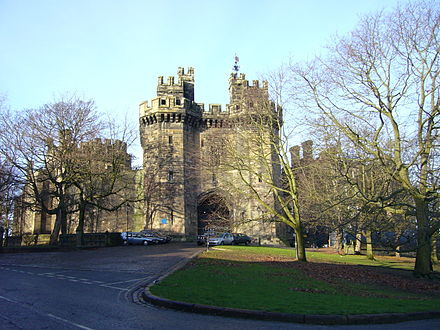
Lancaster Castle, where the Lancaster Assizes of 1612 took place
Lancaster Assizes, 18–19 August 1612
All the other accused lived in Lancashire, so they were sent to Lancaster Assizes for trial, where the judges were once again Altham and Bromley. The prosecutor was local magistrate Roger Nowell, who had been responsible for collecting the various statements and confessions from the accused. Nine-year-old Jennet Device was a key witness for the prosecution, something that would not have been permitted in many other 17th-century criminal trials. However, King James had made a case for suspending the normal rules of evidence for witchcraft trials in his Daemonologie. As well as identifying those who had attended the Malkin Tower meeting, Jennet also gave evidence against her mother, brother, and sister.
Nine of the accused – Alizon Device, Elizabeth Device, James Device, Anne Whittle, Anne Redferne, Alice Nutter, Katherine Hewitt, John Bulcock and Jane Bulcock – were found guilty during the two-day trial and hanged at Gallows Hill in Lancaster on 20 August 1612; Elizabeth Southerns died while awaiting trial. Only one of the accused, Alice Grey, was found not guilty
18 August
Anne Whittle (Chattox) was accused of the murder of Robert Nutter. She pleaded not guilty, but the confession she had made to Roger Nowell—likely under torture—was read out in court, and evidence against her was presented by James Robinson, who had lived with the Chattox family 20 years earlier. He claimed to remember that Nutter had accused Chattox of turning his beer sour, and that she was commonly believed to be a witch. Chattox broke down and admitted her guilt, calling on God for forgiveness and the judges to be merciful to her daughter, Anne Redferne.
Elizabeth Device was charged with the murders of James Robinson, John Robinson and, together with Alice Nutter and Demdike, the murder of Henry Mitton. Elizabeth Device vehemently maintained her innocence. Potts records that "this odious witch"[ suffered from a facial deformity resulting in her left eye being set lower than her right. The main witness against Device was her daughter, Jennet, who was about nine years old. When Jennet was brought into the courtroom and asked to stand up and give evidence against her mother, Elizabeth, confronted with her own child making accusations that would lead to her execution, began to curse and scream at her daughter, forcing the judges to have her removed from the courtroom before the evidence could be heard Jennet was placed on a table and stated that she believed her mother had been a witch for three or four years. She also said her mother had a familiar called Ball, who appeared in the shape of a brown dog. Jennet claimed to have witnessed conversations between Ball and her mother, in which Ball had been asked to help with various murders. James Device also gave evidence against his mother, saying he had seen her making a clay figure of one of her victims, John Robinson. Elizabeth Device was found guilty.

Statue of Alice Nutter in Roughlee
James Device pleaded not guilty to the murders by witchcraft of Anne Townley and John Duckworth. However he, like Chattox, had earlier made a confession to Nowell, which was read out in court. That, and the evidence presented against him by his sister Jennet, who said that she had seen her brother asking a black dog he had conjured up to help him kill Townley, was sufficient to persuade the jury to find him guilty
19 August
The trials of the three Samlesbury witches were heard before Anne Redferne's first appearance in court, late in the afternoon, charged with the murder of Robert Nutter. The evidence against her was considered unsatisfactory, and she was acquitted
Anne Redferne was not so fortunate the following day, when she faced her second trial, for the murder of Robert Nutter's father, Christopher, to which she pleaded not guilty. Demdike's statement to Nowell, which accused Anne of having made clay figures of the Nutter family, was read out in court. Witnesses were called to testify that Anne was a witch "more dangerous than her Mother". But she refused to admit her guilt to the end, and had given no evidence against any others of the accused.Anne Redferne was found guilty.
Jane Bulcock and her son John Bulcock, both from Newchurch in Pendle, were accused and found guilty of the murder by witchcraft of Jennet Deane. Both denied that they had attended the meeting at Malkin Tower, but Jennet Device identified Jane as having been one of those present, and John as having turned the spit to roast the stolen sheep, the centrepiece of the Good Friday meeting at the Demdike's home
Alice Nutter was unusual among the accused in being comparatively wealthy, the widow of a tenant yeoman farmer. She made no statement either before or during her trial, except to enter her plea of not guilty to the charge of murdering Henry Mitton by witchcraft. The prosecution alleged that she, together with Demdike and Elizabeth Device, had caused Mitton's death after he had refused to give Demdike a penny she had begged from him. The only evidence against Alice seems to have been that James Device claimed Demdike had told him of the murder, and Jennet Device in her statement said that Alice had been present at the Malkin Tower meeting.Alice may have called in on the meeting at Malkin Tower on her way to a secret (and illegal) Good Friday Catholic service, and refused to speak for fear of incriminating her fellow Catholics. Many of the Nutter family were Catholics, and two had been executed as Jesuit priests, John Nutter in 1584 and his brother Robert in 1600. Alice Nutter was found guilty
Katherine Hewitt (a.k.a. Mould-Heeles) was charged and found guilty of the murder of Anne Foulds. She was the wife of a clothier from Colne,and had attended the meeting at Malkin Tower with Alice Grey. According to the evidence given by James Device, both Hewitt and Grey told the others at that meeting that they had killed a child from Colne, Anne Foulds. Jennet Device also picked Katherine out of a line-up, and confirmed her attendance at the Malkin Tower meeting.
Alice Grey was accused with Katherine Hewitt of the murder of Anne Foulds. Potts does not provide an account of Alice Grey's trial, simply recording her as one of the Samlesbury witches – which she was not, as she was one of those identified as having been at the Malkin Tower meeting – and naming her in the list of those found not guilty
Alizon Device, whose encounter with John Law had triggered the events leading up to the trials, was charged with causing harm by witchcraft. Uniquely among the accused, Alizon was confronted in court by her alleged victim, John Law. She seems to have genuinely believed in her own guilt; when Law was brought into court Alizon fell to her knees in tears and confessed She was found guilty.[
https://www.wikiwand.com/en/Pendle_witches
3 notes
·
View notes
Text
Monday, 9 June 1823
7 35/60
12
a minute or 2 in the stable – ready to ride at 8 20/60, but the rain delayed me till 9 – then rode Hotspur up and down the hall-croft an hour –
sat down to breakfast immediately, and at 10 55/60 had changed my dress, and set off with my aunt in the gig – drove the black mare – we called and sat 10 minutes with Mrs Saltmarshe – Mr John Rawson there but went into another to speak to his mother whom consequently we did not see –
called and sat 1/4 hour or 20 minutes with Mrs Stansfield Rawson and her daughter Catherine and then drove to Whitewell Place in 35 minutes – sat 20 minutes with Mrs Veitch who told by all means to see Whalley abbey the property of Lord Curzon of Keddleston – a very nice Inn there kept by a Mrs Wiglesworth – good road from Whalley to Burnley –
got home at 1 3/4, having stopt a minute as we returned at Northgate to propose driving Marian to Crownest etc tomorrow –
I have a thousand fears about the horses – neither of them is good for anything – we will try about getting rid of one or both when we come back – In the stable some time – came upstairs at 2 1/2 – wrote the above of today –
From 2 1/2 to 5 looking over Whitaker’s history of Craven – Dined at 5 – at 6 3/4 set off to walk to Lightcliffe –
after waiting a little Mrs William Priestley came home (from Hipperholme) drank tea with her – Miss Grisdale downstairs after a week’s confinement with a cold, and spasms in her head – Miss Ellen Carter called (from Giles house) and staid almost an hour – I staid her out, which made me late, and Mrs William Priestley and I engaged in confidential conversation walked backwards and forwards on my road home till 9 50/60 they talk of an excursion as a blind to get rrid of Miss Grisdale Edward no better on the whole the fever still high pulse a hundred he is sstill violent –
got home at 10 1/4 – came upstairs at 10 40/60 – Looking over the library catalogue for Gray’s letters etc from Craven – not in the library –
Fine day – Barometer 1/2 degree above changeable Fahrenheit 53° at 10 40/60 p.m. – [E three dots O one dot, marking discharge from venereal complaint] two oor three very little drops –
reference number: SH:7/ML/E/7/0022
1 note
·
View note
Video
Princess Royal 6201 'Princess Elizabeth' - Whalley Viaduct by Liam Barnes
Via Flickr:
With rain pouring down on the village of Whalley, Princess Royal 6201 'Princess Elizabeth' works over the arches, passing the Abbey's 14th century gatehouse...
0 notes
Photo
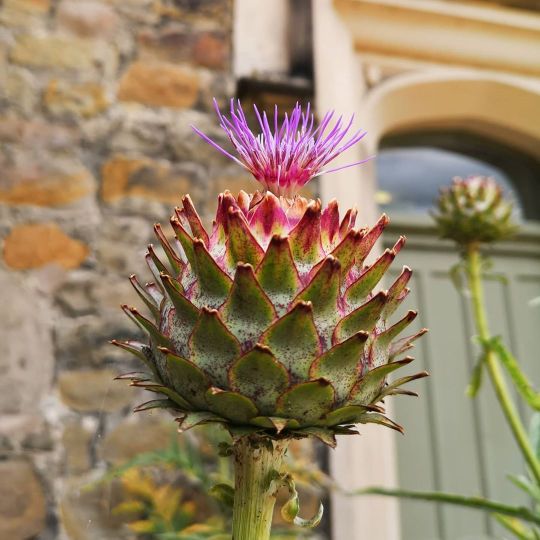
You don't have to go far to find nature, history and feel like you are very far away from home. #outdoors #britishtourism #adventure #local #staycation #flowers #daysout #lancashire I can't wait till the gardens open to go back and explore, but the towns adorable. (at Whalley Abbey) https://www.instagram.com/p/CDN0MswBrRO/?igshid=1bqyublo5ld5i
0 notes
Photo
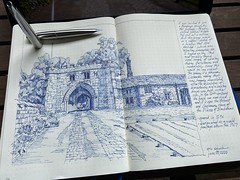
Whalley Abbey - Lancashire, UK (virtual sketch)
0 notes
Photo
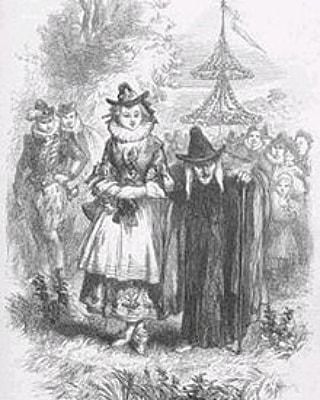
The trials of the Pendle witches in 1612 are among the most famous witch trials in English history, and some of the best recorded of the 17th century. The twelve accused lived in the area surrounding Pendle Hill in Lancashire, a county which, at the end of the 16th century, was regarded by the authorities as a wild and lawless region: an area “fabled for its theft, violence and sexual laxity, where the church was honoured without much understanding of its doctrines by the common people.” The nearby Cistercian abbey at Whalley had been dissolved by Henry VIII in 1537, a move strongly resisted by the local people, over whose lives the abbey had until then exerted a powerful influence. Despite the abbey’s closure, and the execution of its abbot, the people of Pendle remained largely faithful to their Roman Catholic beliefs and were quick to revert to Catholicism on Queen Mary’s accession to the throne in 1553. When Mary’s Protestant half-sister Elizabeth came to the throne in 1558 Catholic priests once again had to go into hiding, but in remote areas such as Pendle they continued to celebrate Mass in secret. In 1562, early in her reign, Elizabeth passed a law in the form of An Act Against Conjurations, Enchantments and Witchcrafts. This demanded the death penalty, but only where harm had been caused; lesser offences were punishable by a term of imprisonment. The Act provided that anyone who should “use, practise, or exercise any Witchcraft, Enchantment, Charm, or Sorcery, whereby any person shall happen to be killed or destroyed,"was guilty of a felony without benefit of clergy, and was to be put to death. On Elizabeth’s death in 1603 she was succeeded by James I. Strongly influenced by Scotland’s separation from the Catholic Church during the Scottish Reformation, James was intensely interested in Protestant theology, focusing much of his curiosity on the theology of witchcraft. #destroytheday https://www.instagram.com/p/B-XQwHUBYBd/?igshid=13bi9uluqeqsk
0 notes
Photo


Today’s Flickr photo with the most hits: an example of the rich embroidery that decorates the 14th CE dalmatic, from Whalley Abbey, which is housed in the Burrell Collection.
#dalmatic#whalley abbey#burrell collection#museum#holy family#glasgow#embroidery#deacon#liturgical garment
1 note
·
View note
Video
<strong>Whalley Abbey vestments, detail 14d fl Nativity <a href="https://www.flickr.com/photos/28433765@N07/">by Peter</a></strong>
"These medieval vestments were worked in the Middle Ages in a very important style of English ecclesiastical embroidery known as Opus Anglicanum.
The vestments originally belonged to Whalley Abbey, a Cistercian abbey in Whalley, Lancashire, at the time of the dissolution of the monasteries. These vestments then came to reside in the possession of the Towneleys, an important Catholic family persecuted for their faith during the reign of Queen Elizabeth I.
Lancashire was one of the places where Catholicism among the landed gentry retained a strong hold, despite the penalties for failing to observe the official state religion as embodied in the Church of England. The hall contains the vestments and a private chapel."
1400 - 1600
4 notes
·
View notes
Video
youtube
Lancashire Witches | William Harrison Ainsworth | *Non-fiction, Historical Fiction, History | Audiobook full unabridged | English | 1/15 Content of the video and Sections beginning time (clickable) - Chapters of the audiobook: please see First comments under this video. The Lancashire Witches is a highly fictionalised account of the activities of the notorious witches Demdike, Chattox and Alice Nutter who, together with others terrorised the district of Lancashire around Pendle Hill and the Forest of Bowland during the early seventeenth century. The witches named in the book were real enough, if not as witches then as people. Ainsworth, in his story brings in the dissolution of Whalley Abbey and the historic families of Assheton, Braddyll and Nowell and takes us through to the final trial and execution at Lancaster Castle in 1612. (Summary by Andy Minter) This is a Librivox recording. If you want to volunteer please visit https://librivox.org/ by Priceless Audiobooks
0 notes
Photo
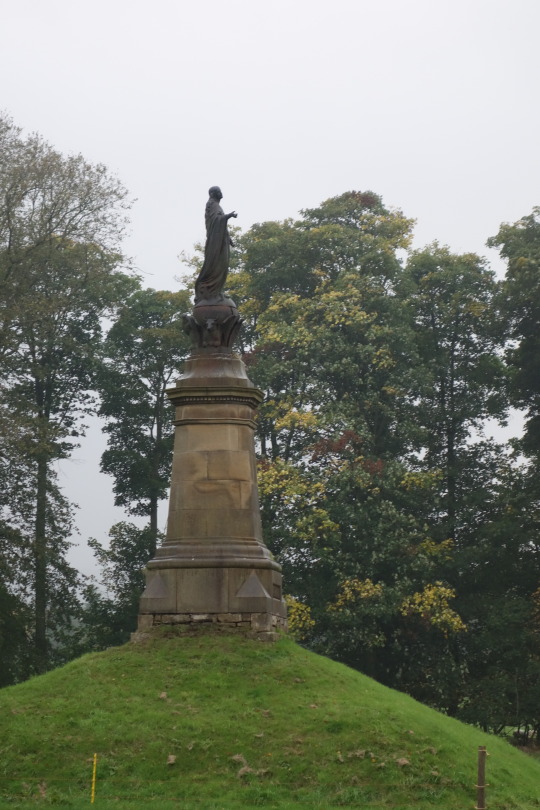
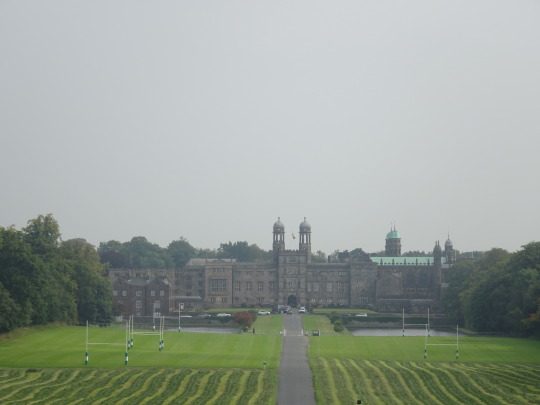
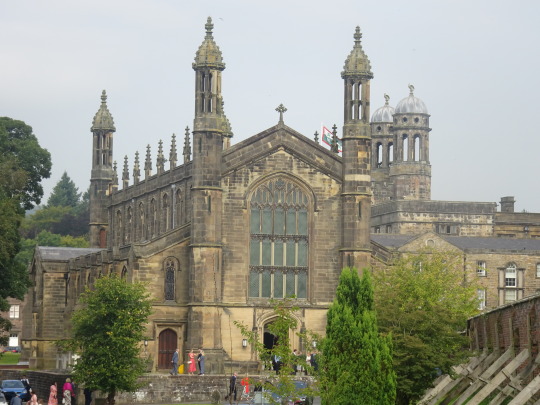
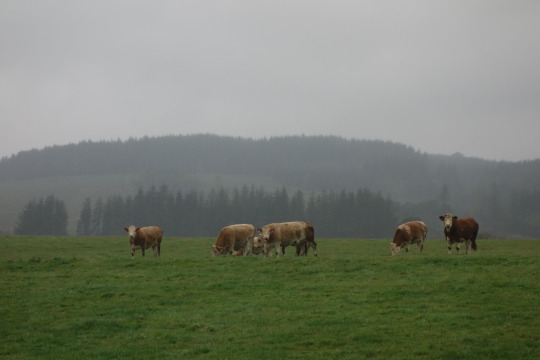

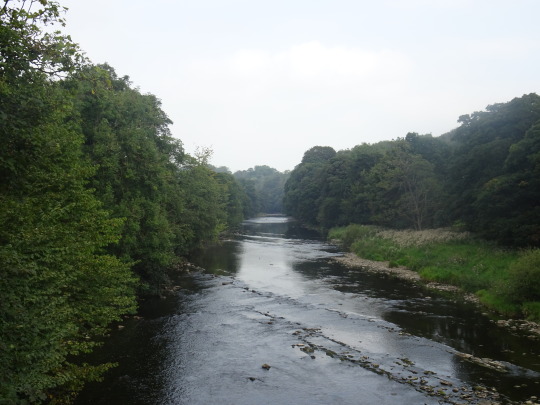




“Since the Reformation, Lancashire has been the centre of English Catholicism, its sacred heartland” JA Hilton.
As soon as you get to Stonyhurst College the Virgin Mary reminds you what sort of place you’re in, and the grounds do not disappoint, but are a treasure trove of Lancashire Catholic history.
Mostly September 2021 with (1, 4,5, 7) October 2015. All pictures taken by me.
The first historical record of this acreage is in 1200, and the first building recorded here is from 1372, when John de Bayley built an oratory here; only fragments remain of this, and most of the rest was built by Bayley’s descendents, the Shireburn family.
Lancashire was a pious, rural conservative community which had a vibrant faith in the early 16th century; schisms such as Lollardy, which shook other parts of England, had little impact here. When the Reformation came to England, and Henry VIII dissolved the monasteries in 1536- including nearby Whalley Abbey- this was widely resisted in Lancashire. The Shireburns stayed Catholic as did many of their followers.
In 1593, Father Robert Parsons founded the College of St Omer on the continent of Europe; by this time, the Reformation had fully taken hold in England and, while many in Lancashire remained Catholic, they had to be circumspect or even act as ‘church papists’ who were outwardly Anglican.
But as you can see from the European (and Irish) links, Catholicism was not a dying faith grimly clinging on in its last stronghold, but was bolstered by the moral and intellectual force of the Catholic Counter-Reformation.
At this time it was illegal to be a Catholic and sheltering Catholic priests was punishable by death (Bernard Cornwell handled this theme very well in his book Fools and Mortals, set in Elizabethan England) but the Shireburns and others took this risk.
There was a setback during the British Civil Wars; Catholics were almost universally loyal to King Charles I, because while he and his followers were cool towards Catholics, it was obvious that their Parliamentarian opponents were staunch Protestants who would redouble persecution of Catholics.
Bizarrely, Oliver Cromwell, the Parliamentary leader who was to overthrow and executed Charles in 1649, spent a night here in 1648 during the wars; he insisted on sleeping downstairs in a suit of armour, as he rightly suspected that his Catholic, royalist hosts wouldn’t give him a warm welcome!
Cromwell died in 1658 and was succeeded by his son Richard, who was overthrown by Charles I’s son Charles II in 1660 (Richard did live until 1712, but was not a player of any importance) and after Charles II died in 1685, he was succeeded by his Catholic brother James II, who outraged Protestants and was himself overthrown in 1688.
The Jacobites, who saw themeselves as the rightful heirs of James II, rose up in 1715 and 1745 against the new rulers of Great Britain; although they enjoyed much support in Lancashire they also failed, and the mood in England became more and more anti-Catholic; even in Lancashire most people had become Protestants by this time, though they were never able to extirpate Catholicism, convert the Shirburns and their followers, or counter that great Jesuit energy.
The gentry were the standard-bearers for Catholicism in the penal times; “the pillars of the Catholic community”, Hilton called them, as they sheltered priests and allowed masses to be held in their homes which were secretly attended by poorer Catholics who lived nearby.
(During this time Charles Carroll, the only Catholic to sign the US Declaration of Independence, was also educated at St Omer).
A very strange thing happened in 1793; the French Revolution having broken out four years earlier, the new regime was anti-clerical and persecuted Jesuits even more than most religious groups. Great Britain, a staunch Protestant power which had defined itself against Catholicism for centuries, was now more tolerant than hitherto Catholic France! The school thus moved back to Lancashire in 1794.
The limited toleration Catholics had in Britain was extended under Catholic Emancipation in 1829 and to celebrate this new freedom Saint Peter, one of the first new Catholic churches built in Britain since the reformation, was built in 1835, designed by J.J. Scoles.
Stonhyurst thus became what it still is, a leading school which has educated Arthur Conan Doyle, JRR Tolkien’s son Father John Tolkien (who also lived in my home city of Stoke on Trent for decades), three saints, three presidents and prime ministers, and countless others; it became co-educational in 1999.
In the grounds one can enjoy, amidst the random warning signs, the Hodder valley, from which Gerard Manley Hopkins- a master here- took much of his inspiration, now nestling in the Forest of Bowland Area of Outstanding Natural Beauty. Then back to the village of Hurst Green, the neighbouring village..
Here we have memorials to (9) the Boer War and (10) the First and Second World Wars, showing that Stonyhurst men (seven of whom have won the Victoria Cross), like everyone in Lancashire, understood redemptive sacrifice very well and all too often lived it.
The Jesuits are not popular with anyone, and certainly their energy, intellect and passionate faith leaves a mark wherever they go; some love it, other hate it but no one denies that they do things on a big scale. This is why the French revolutionaries felt the need to persecute them, and why even anti-Catholics have to admire their ability to get things done.
So let the staunchly Protestant George Borrow, writing in 1843, lead us out.
“I am a Protestant, but I am ready to assert that there are no people in the world better qualified, upon the whole, to be intrusted with the education of youth. Their moral system and discipline are truly admirable. Their pupils, in after life, are seldom vicious and licentitious charachters, and are in general men of learning, science and posessed of every elegant accomplishment”.
0 notes
Photo

Pretty post of flowers bought at #Whalley Abbey last weekend. There was a Farmer’s Market in the main building and these gorgeous flowers called me! 💐🤗💐 They’ve got a simple, unreconstructed beauty about them that expensive, overly-designed bouquets don’t have 🌸👍🌸 #lancashire #clitheroe #farmersmarket #mindbodyspirit (at Whalley Abbey) https://www.instagram.com/p/BxXoexdnU5L/?utm_source=ig_tumblr_share&igshid=g2h6ukycn5i9
0 notes

